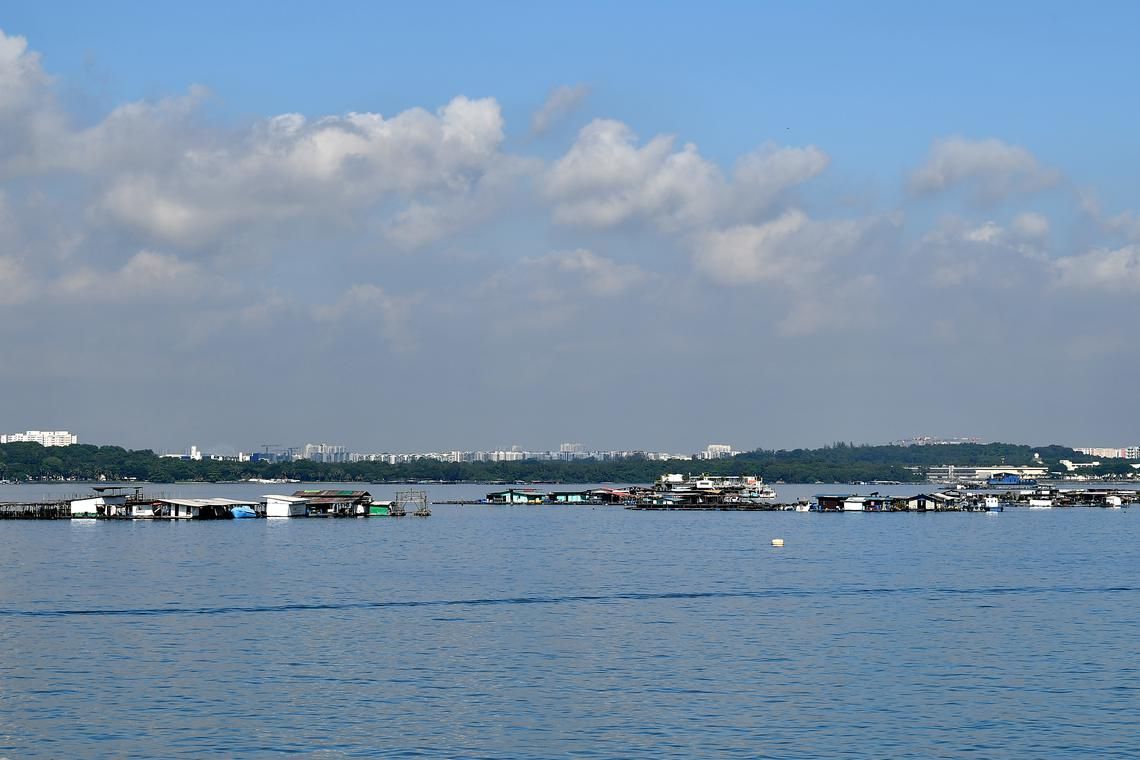SINGAPORE – The Singapore Food Agency (SFA) is planning to expand aquaculture operations in the East Johor Strait to raise local production of seafood there to a maximum of 6,700 tonnes annually.
This is more than the amount of seafood produced by the whole of Singapore, which was 4,100 tonnes in 2023, according to the latest food statistics. That accounted for 7.3 per cent of total seafood consumed here at the time.
Responding to queries from The Straits Times, SFA said on May 16 that these farming spaces will be progressively released for tender from 2026.
These will be located in the waters off Pasir Ris, Pulau Ubin and Pulau Tekong, spanning a total area of 117ha, or 27 times the size of the Padang field.
These spaces are currently occupied by more than 30 farms that primarily adopt open-cage farming, where livestock is reared in the sea.
Observers of the aquaculture industry welcomed the plan for more spaces to boost Singapore’s flagging fish industry, but pressed for more clarity about the kind of farms that will be tendered, as these will impact the sustainability of production.
The spaces will make more “good waters” available for aquaculture, said Mr Ken Cheong, chief executive of the Singapore Agro-Food Enterprises Federation, which focuses on improving productivity and farming standards of coastal fish farms.
“I think new farmers will have a chance to enter the industry,” he added.
Singapore Institute of Technology Associate Professor Matthew Tan said the targeted production levels can only be achieved if there is a concerted effort to address outstanding pain points that have arisen from farming with traditional open cages and the less pollutive system of close containment cages.
Fish farmed in open cages are prone to being wiped out by environmental changes like harmful algal booms that have broken out on multiple occasions in the East Johor Strait over the past decade, said Prof Tan, who chairs the Asia Pacific Economic Cooperation’s Policy Partnership on Food Security for sustainable development in agriculture and fishery sectors.
Meanwhile, sea-based close containment systems – where farmed fish are kept from direct contact with the surrounding sea in special tanks or enclosures – incur higher energy costs, he said.
He suggested for the government to run submarine cables to allow farms to tap cheaper energy from the land instead of relying on generators.
He said: “Another problem is that many fish farmers are retiring, and it’s unclear if there will be a second generation of farmers keen to join the industry.”
In 2024 alone, about a quarter of aquaculture farms wound up their operations.
In November 2024, Singapore unveiled a sweeping plan to overhaul the aquaculture sector amid a decline in the number of sea-based fish farms.
Professor William Chen, the director of Nanyang Technological University’s Food Science and Technology Programme, said the planned expansion is part of a systematic integration of local seafood production, which is still a growing space experiencing teething issues.
He said: “More research and development is needed to bring down operating costs for farmers and improve technology.”
The planned expansion in the East Johor Strait will occur around a known hot spot for dugongs, which are critically endangered in Singapore.
In 2022, researchers found that despite high shipping traffic and land reclamation works over the decades in the East Johor Strait, 42 of 60 dugong observations in Singapore occurred around Changi Beach, Pulau Tekong and Pulau Ubin.
To curb the environmental impact of fish farms, SFA said farms will be encouraged to adopt good aquaculture practices and technologies to promote environmental and resource sustainability.
An environmental impact assessment of the development available for public viewing in March said that the planned expansion is unlikely to adversely impact the environment’s water and sediment quality, as well as marine ecosystems such as seagrass that dugongs graze on.
SFA said as part of measures to blunt any potential environmental impacts due to aquaculture development in the East Johor Strait, farms are recommended to be sited within aquaculture zones that can flush waste easily and limit their release of nutrients that lower water quality, among other things.
Said SFA: “This will help to protect seagrass habitats and have no impacts to other marine ecology.”
Observers said the current lack of regulatory teeth for such recommendations is likely due to the difficulty of enforcement in the open sea.
In the long-term, SFA said it will monitor water and sediment quality as well as the seagrass habitat for any potential impacts.
It said it would review the environmental impact assessment’s findings and feedback received from the public, and work with relevant stakeholders to minimise any potential environmental impacts of aquaculture development at East Johor Strait.
Join ST’s WhatsApp Channel and get the latest news and must-reads.

